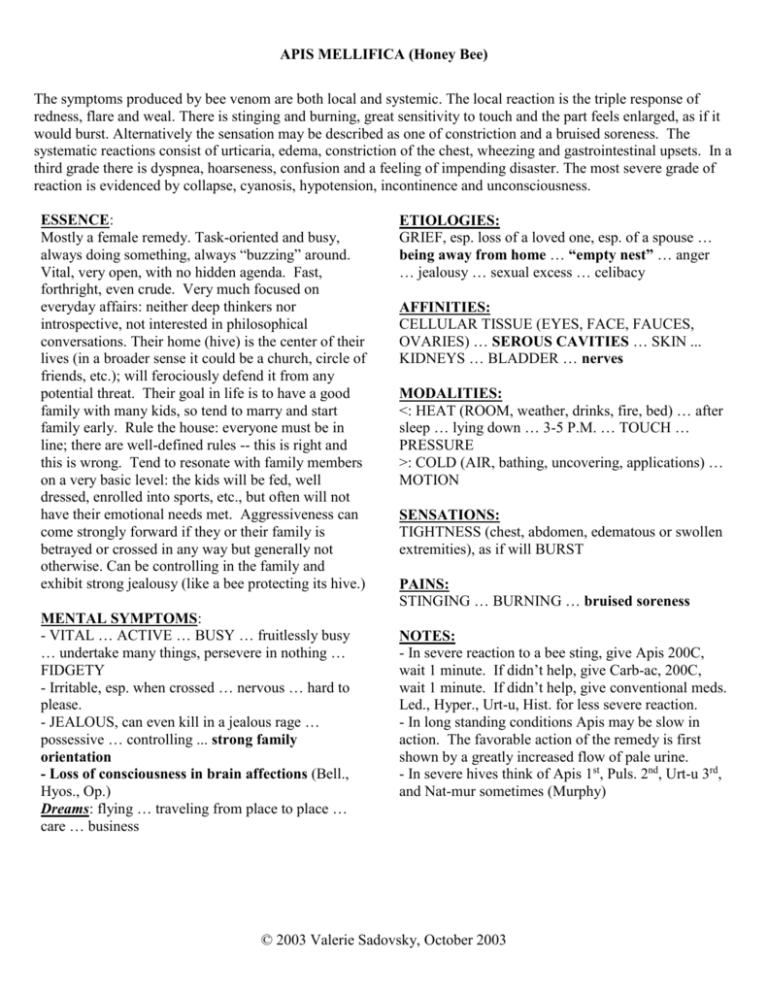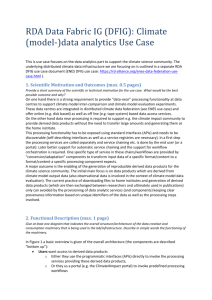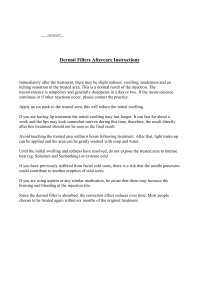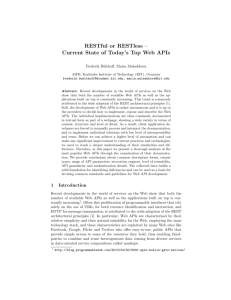Apis - Marlev Homeopathy LLC
advertisement

APIS MELLIFICA (Honey Bee) The symptoms produced by bee venom are both local and systemic. The local reaction is the triple response of redness, flare and weal. There is stinging and burning, great sensitivity to touch and the part feels enlarged, as if it would burst. Alternatively the sensation may be described as one of constriction and a bruised soreness. The systematic reactions consist of urticaria, edema, constriction of the chest, wheezing and gastrointestinal upsets. In a third grade there is dyspnea, hoarseness, confusion and a feeling of impending disaster. The most severe grade of reaction is evidenced by collapse, cyanosis, hypotension, incontinence and unconsciousness. ESSENCE: Mostly a female remedy. Task-oriented and busy, always doing something, always “buzzing” around. Vital, very open, with no hidden agenda. Fast, forthright, even crude. Very much focused on everyday affairs: neither deep thinkers nor introspective, not interested in philosophical conversations. Their home (hive) is the center of their lives (in a broader sense it could be a church, circle of friends, etc.); will ferociously defend it from any potential threat. Their goal in life is to have a good family with many kids, so tend to marry and start family early. Rule the house: everyone must be in line; there are well-defined rules -- this is right and this is wrong. Tend to resonate with family members on a very basic level: the kids will be fed, well dressed, enrolled into sports, etc., but often will not have their emotional needs met. Aggressiveness can come strongly forward if they or their family is betrayed or crossed in any way but generally not otherwise. Can be controlling in the family and exhibit strong jealousy (like a bee protecting its hive.) MENTAL SYMPTOMS: - VITAL … ACTIVE … BUSY … fruitlessly busy … undertake many things, persevere in nothing … FIDGETY - Irritable, esp. when crossed … nervous … hard to please. - JEALOUS, can even kill in a jealous rage … possessive … controlling ... strong family orientation - Loss of consciousness in brain affections (Bell., Hyos., Op.) Dreams: flying … traveling from place to place … care … business ETIOLOGIES: GRIEF, esp. loss of a loved one, esp. of a spouse … being away from home … “empty nest” … anger … jealousy … sexual excess … celibacy AFFINITIES: CELLULAR TISSUE (EYES, FACE, FAUCES, OVARIES) … SEROUS CAVITIES … SKIN ... KIDNEYS … BLADDER … nerves MODALITIES: <: HEAT (ROOM, weather, drinks, fire, bed) … after sleep … lying down … 3-5 P.M. … TOUCH … PRESSURE >: COLD (AIR, bathing, uncovering, applications) … MOTION SENSATIONS: TIGHTNESS (chest, abdomen, edematous or swollen extremities), as if will BURST PAINS: STINGING … BURNING … bruised soreness NOTES: - In severe reaction to a bee sting, give Apis 200C, wait 1 minute. If didn’t help, give Carb-ac, 200C, wait 1 minute. If didn’t help, give conventional meds. Led., Hyper., Urt-u, Hist. for less severe reaction. - In long standing conditions Apis may be slow in action. The favorable action of the remedy is first shown by a greatly increased flow of pale urine. - In severe hives think of Apis 1st, Puls. 2nd, Urt-u 3rd, and Nat-mur sometimes (Murphy) © 2003 Valerie Sadovsky, October 2003 APIS MELLIFICA (Honey Bee) GENERAL SYMPTOMS: - WARM-BLOODED but may be chilly though local complaints are almost always < from heat - THIRSTLESS (= edema, drown in his own fluids) - RIGHT-SIDED or right to left. - SWELLING and EDEMA; both generalized and in the local complaints, > cold & cold applications - Acute allergic reactions with edema, hives, stinging, shooting, burning, wondering pains (to insect stings, esp. bee, food, medicines, vaccines, etc.) - Fluid collection in/around organs (brain, heart, kidneys) PHYSICAL SYMPTOMS: Head: BAG-LIKE, PUFFY SWELLING under/around the eyes; eyes swollen shut … conjunctivitis like “raw meat” … acute meningitis & encephalitis with severe HA, boring the head into the pillow, and brain cry … coma … head pain from behind left ear extending to the left eye or temple … HYDROCEPHALUS … edema of lips, tongue, larynx … “never been well since meningitis” (Bell.) Throat: pharyngitis > from cold drinks, with baglike swelling of the uvula … severe allergic edema Urinary: cystitis with scalding pain during urination (Canth.) ... retained urine, esp. in newborns … edematous swelling of the whole body with scanty urine (favorable action of Apis is first shown by a greatly increased flow of pale urine). Extremities: awkwardness; drops things ... edema of extremities ... red and inflamed joints; dry heat with burning, > cold ... paronychia, < from heat. Genitalia: OVARIAN CYSTS, esp. right-sided ... miscarriage esp. in the 1st trimester ... increased sexual desire but generally balanced sex life ... complaints from suppression of sexual desires … water retention at PMS … hydrocele Skin: DRY … PALE, WAXY, EDEMATOUS SWELLING WITH RED ROSY HUE (due to accumulation of serum in cellular tissue) … URTICARIA with burning pains … eczema with marked swelling, > from cold applications … herpes zoster with marked > from cold applications PRIME INDICATIONS: 1. Burning/stinging pains; worse heat; better cold. 2. Pink, waxy-transparent swellings, extremely sensitive to touch and pressure. 3. Jealous, fruitlessly busy, fidgety; clumsy. 4. Right-sided complaints; or right to left. 5. Warm-blooded persons. 6. No thirst. DIFFERENTIALS: Arsenicum: both have burning pains, but Apis is > for cold, Ars. for warmth. Ars. is anxious, Apis just fidgety. Ars. is thirsty, Apis not. Belladonna: the congestions of Belladonna are more violent, with throbbing of the carotids, injected red eyes, and drowsiness broken by starts and frightened outcries. The skin is hot and the face red, or, in some cases, pale; but not pale and edematous as in Apis. Opium: complete stupor after stroke is said to have yielded to Apis when Opium failed (Farrington) Rhus-tox: in Rhus the eruptions are darker, the erysipelas dusky red, and there is great bodily restlessness, not the fidgetiness of Apis. Swelling of Bell. is bright red, of Apis is rosy or purplish livid hue. RELATIONSHIPS: Complementary: Nat-mur (chronic of Apis). Inimical: Rhus-tox SOURCES: Gibson, Studies of Remedies Gutman, Homeopathy Farrington, Homeopathy (RW) Cowperthwaite, Textbook (RW) Murphy, Fundamentals of MM Vermeulen, Prisma © 2003 Valerie Sadovsky, October 2003









